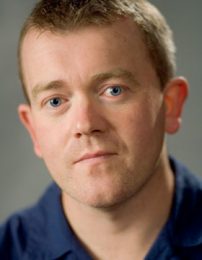Process of joining Catholic Church better when priests, laypeople work together
The Catholic Church’s system for bringing people into the faith works best when laypeople and priests take an active part and when the learning process stretches beyond the classroom, a new book by a Wake Forest University sociologist reports.
 In “Real Stories of Christian Initiation,” co-authored with Sarah MacMillen and Kelly Culver, David Yamane documents how the Rite of Christian Initiation of Adults (RCIA) was practiced in five parishes in Indiana. Yamane, assistant professor of sociology, spent almost a year observing the RCIA process.
In “Real Stories of Christian Initiation,” co-authored with Sarah MacMillen and Kelly Culver, David Yamane documents how the Rite of Christian Initiation of Adults (RCIA) was practiced in five parishes in Indiana. Yamane, assistant professor of sociology, spent almost a year observing the RCIA process.
The contemporary RCIA process was created after the Second Vatican Council, but is patterned after an ancient model of formation and initiation.
Ideally, the process unfolds over a period of at least a year and ends when the candidate receives the sacraments of initiation in the Catholic Church: baptism, confirmation, and the Eucharist, Yamane said.
Each parish implements this ideal process differently. Among the study’s central findings is that the number of people involved in the RCIA process is more important than the financial resources of the individual parish.
“Our five case studies show that the extent of implementation is directly proportional to the number of individuals involved,” Yamane said.
The RCIA needs lay involvement to succeed, according to the book. However, the authors also concluded that it is particularly important for the priests to play a role beyond the rites in the RCIA process.
“Although laypeople are largely responsible for adult initiation today, successful RCIA programs enjoy the supportive collaboration of parish priests both in catechetical formation and liturgical celebrations,” Yamane said. “The parishes that excel at this collaboration between ordained and lay ministers are a model for all church ministries. This is particularly challenging in today’s environment when we have a declining number of priests and those who remain are badly overworked.”
The researchers also found that classroom learning often dominated the process. On only a handful of occasions did they observe any teaching that took place outside a classroom setting.
“The RCIA is supposed to be more than just book-learning about Catholicism,” Yamane said. “Ideally, it is an apprenticeship in the Catholic Christian life. You cannot be a good Catholic Christian only within the walls of a classroom, or even a church building, so you cannot provide an apprenticeship that does not reach beyond the classroom. Unfortunately, we often think of the process as one of education about faith rather than formation in the practices of faith.”
Yamane and his co-researchers also found important common ground in all the parishes they studied.
“Every parish RCIA process we observed made a good-faith effort to accurately convey core beliefs and teachings of the church,” Yamane wrote in the final chapter of the book.
Since 1988, more than a million individuals in the United States have entered the church through the RCIA process, said Yamane, who himself went through the process in 1992.
“The RCIA process has been in place for a number of years now, and yet we do not know much about what it looks like in practice. The bulk of what has been written about the RCIA process is abstract, not grounded in the actual experiences of those working ‘in the trenches,'” Yamane said.
He hopes the case studies will help improve the RCIA process.
Yamane focuses on the sociology of religion and postwar American Catholicism and edits the academic journal, “Sociology of Religion: A Quarterly Review.” He is also the author of “Student Movements for Multiculturalism” and “The Catholic Church in State Politics,” and editor of “Goodbye Father: The Celibate Male Priesthood and the Future of the Catholic Church.”
Categories: Research & Discovery, University Announcements
Media Contact
Cheryl Walker
media@wfu.edu
336.758.5237



